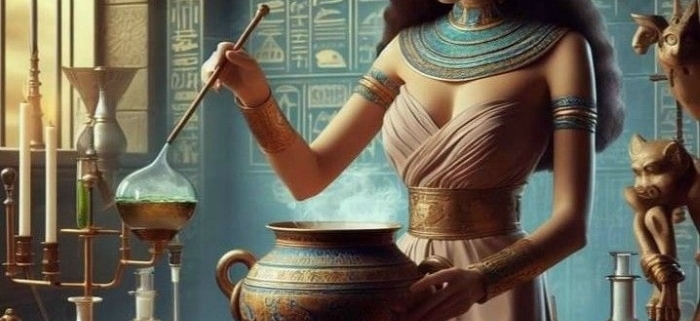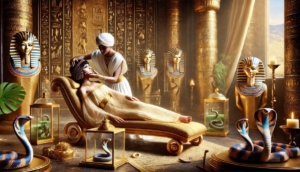Ancient Egyptian Medicine: Healing Practices in the Time of the Pharaohs
Ancient Egyptian Medicine: Healing Practices in the Time of the Pharaohs
Ancient Egypt, celebrated for its monumental pyramids and legendary rulers, was also a cradle of early medical science. The healthcare system that emerged during the pharaonic era combined observational knowledge, herbal remedies, and sacred rituals, forming one of the most advanced medical traditions of the ancient world.
At the core of ancient Egyptian medicine was a belief that health and spirituality were inseparable. Illness was often attributed to divine punishment or supernatural forces. Consequently, physicians were not only medical practitioners but also spiritual figures—serving as intermediaries between the gods and the sick. They often invoked deities such as Thoth, god of wisdom, and Sekhmet, goddess of healing, to support recovery.
Two of the most influential medical texts from this era are the Ebers Papyrus and the Edwin Smith Papyrus, dating back to around 1500 BCE. These ancient manuscripts provide detailed descriptions of diseases, symptoms, and over 700 treatments involving plant-based ingredients, minerals, and animal substances. They reveal a sophisticated understanding of anatomy and internal medicine far ahead of their time.
Egyptian physicians approached treatment with a methodical system. Ailments were categorized based on affected organs or symptoms. Common conditions such as wounds, gastrointestinal issues, respiratory infections, and even psychological disturbances were diagnosed and managed with therapies like wound dressing, herbal compresses, massages, and surgery. Notably, substances like honey were used for their antibacterial properties, garlic for cardiovascular health, and castor oil as a laxative.
The Edwin Smith Papyrus, considered the earliest surgical treatise in existence, stands out for its clinical tone. Unlike other documents steeped in mysticism, it outlines trauma management procedures and demonstrates a rational, evidence-based approach—highlighting a medical shift toward empirical observation.
Religious temples often functioned as healing sanctuaries. Patients would partake in ritual (dream healing) by sleeping in special chambers to receive visions from gods. Medical amulets, magical spells, and charms were routinely used as part of holistic treatments.
Ancient Egyptian dentistry was particularly advanced. Archaeological findings suggest the use of prosthetic teeth and minor surgical procedures. Given the harsh desert climate, eye infections were also common and treated with specially prepared ointments from herbs and minerals.
Medical training took place in (Houses of Life), typically located within temple complexes. These early medical schools nurtured a professional class of healers—both male and female. The presence of women doctors in ancient Egypt was unusual for the time and underscores the society’s progressive approach to medicine.
Though mystical beliefs played a significant role, ancient Egyptian medicine was far from primitive. Its structured methodologies and therapeutic practices later influenced Greek and Roman medicine. Even Hippocrates, the father of Western medicine, is believed to have drawn upon Egyptian knowledge.
Special cases in Ancient Egyptian medicine:
Recent scans of ancient Egyptian mummies revealed rare evidence of metal implants used to restore broken bones, showcasing the advanced surgical skills of ancient physicians. One remarkable case involved a toe joint stabilized with a metal prosthesis, suggesting intentional orthopedic treatment.
In another fascinating discovery, ancient texts and practices indicate that Egyptians had a technique to predict a baby’s gender before birth. This involved urinating on barley and wheat seeds—if barley sprouted first, it indicated a boy; if wheat, a girl. Surprisingly, modern studies suggest some accuracy in this method.
These findings highlight the ingenuity and medical curiosity of pharaonic Egypt, blending empirical practice with observation long before modern science.
Today, the medical legacy of the pharaohs endures. Many of their remedies have stood the test of time, and their integrative approach—balancing science, spirituality, and nature—continues to inspire modern holistic medicine.
In conclusion, the medical practices of ancient Egypt reflect a civilization deeply committed to healing, wisdom, and harmony between the body and the divine. Their contributions to medical science remain a powerful testament to their innovation and reverence for life.
Discover more about the secerts of ancient Egypt with Axatours
Get ready for the ultimate Egyptian adventure! With Axatours, we take you on exclusive, expertly curated tours of Egypt, designed to immerse you in the heart of Egypt’s rich culture and history. Our experienced team will guide you every step of the way, ensuring an unforgettable journey. For more details and exclusive offers, click the link here and start planning your dream trip!
Written by ATW July 2025.






